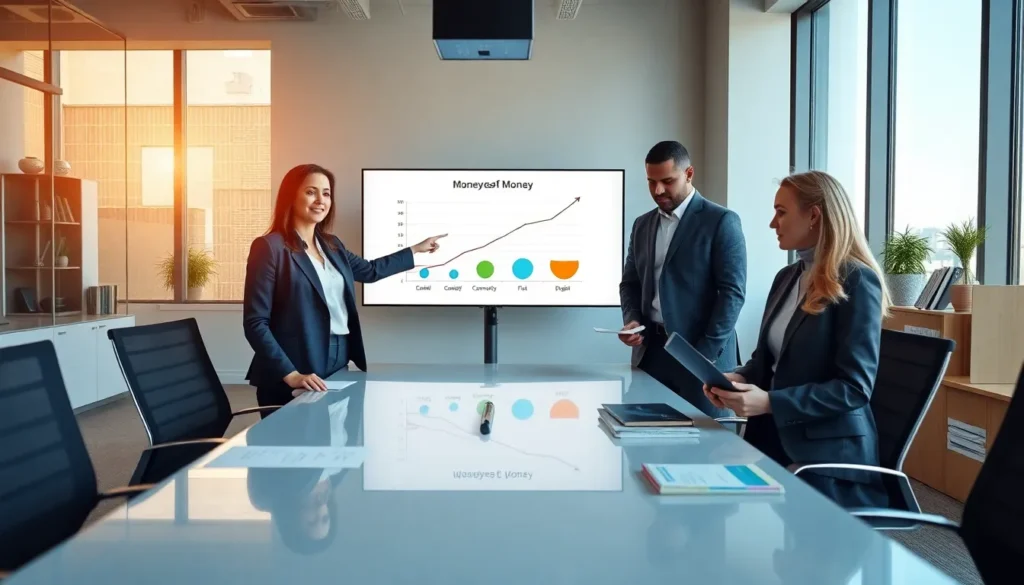Money makes the world go ’round, or at least that’s what they say. From ancient bartering systems to digital currencies today, the concept of money has evolved tremendously. But what really defines money? In this text, we’ll jump into the types of money in economics, exploring their diverse roles, functions, and historical transformations. Prepare for a journey that’s informative yet sprinkled with a dash of wit.
Understanding Money: Definition And Functions

Money isn’t just a stack of bills or a shiny coin in your pocket. At its core, it serves three primary functions: serving as a medium of exchange, a unit of account, and a store of value.
Firstly, as a medium of exchange, money facilitates transactions. Imagine trying to buy your morning coffee with a goat: it complicates things, right? Money simplifies this process by providing a universally accepted form.
Next, money acts as a unit of account. It provides a way to assign value to goods and services, allowing us to compare prices easily. No more guesswork, money helps consumers and producers evaluate worth in a straightforward manner.
Finally, money serves as a store of value. This means it can hold its value over time, allowing individuals to save and plan for the future. Unlike a loaf of bread that gets stale, money can be saved and used when needed.
Essentially, the transformative power of money is found in its ability to streamline everyday transactions and influence economic stability, making it a crucial component of any economy.
Historical Overview Of Money
The history of money is nothing short of fascinating. It starts with barter systems, where goods were exchanged directly. Picture two farmers awkwardly trying to negotiate the value of hens for corn.
As societies evolved, they realized the inefficiencies of bartering. Enter commodity money, an early form of currency where actual goods were used as money. Think shells, salt, or precious metals. These items had intrinsic value, meaning they were valuable beyond their use as money.
Then, around the 7th century BC, fiat money came into play. This type of money has no intrinsic value and isn’t backed by a physical commodity. It derives its worth simply from the trust people place in it, like modern-day paper bills.
Fast forward to the 20th century, and representative money emerged. This type is based on a promise that it can be traded for a commodity. Originally, gold and silver certificates fit this description but have seen diminished use with the decline of the gold standard.
Finally, as we’ve all experienced in recent years, digital currency is on the rise. It’s revolutionizing everything with cryptocurrencies like Bitcoin leading the charge. Understanding this evolution helps us appreciate not only the convenience of various forms of currency but also the adaptability of the money system.
Types Of Money
1. Commodity Money
Commodity money refers to currency that has intrinsic value, meaning it’s made of materials that have value themselves. This could be gold, silver, or even cigarettes during wartime. Such goods are desirable, allowing them to serve as an effective medium of exchange.
2. Fiat Money
Fiat money is what most people use today, it has no intrinsic value and isn’t backed by a physical commodity. Its power lies in the collective trust that people place in it. Examples include U.S. dollars or euros, which the government maintains as legal tender.
3. Representative Money
This money represents a claim on a commodity, like a gold certificate. Although it doesn’t contain intrinsic value, it is backed by a physical asset, ensuring that it can be exchanged for that asset’s worth. While less common today, it laid the groundwork for how we perceive value in money.
4. Digital Currency
Digital currency is the new kid on the block. Cryptocurrencies like Bitcoin and Ethereum represent decentralized forms of currency operating on blockchain technology. They offer unique benefits, such as faster transactions and reduced fees, but also pose challenges like volatility and regulatory scrutiny.
Each type of money has its own advantages and disadvantages, and understanding these distinctions is crucial for navigating today’s complex economic landscape.
The Role Of Money In The Economy
Money acts as the heartbeat of an economy, synchronizing the actions of consumers, businesses, and governments. As a medium of exchange, it allows for the flow of goods and services, making trade possible.
Also, it influences monetary policy, which can dictate interest rates and inflation. For instance, when a central bank decides to print more money, it can stimulate economic activity but could also lead to inflation if not managed properly.
The availability of money also impacts employment levels. With a functional system of money, businesses can invest and grow, leading to job creation. In contrast, if money becomes scarce, it can trigger layoffs and economic downturns.
Also, variations in money supply can cause currency value fluctuations. Understanding these dynamics is crucial for both policymakers and consumers, as they navigate the ever-evolving economic landscape.
Challenges And Future Of Money
As we march forward into an increasingly digital world, money faces several challenges. Cybersecurity threats are a significant concern, as digital currencies can be vulnerable to hacking. These issues raise questions about safety, privacy, and the future of financial systems.
Also, cryptocurrencies, while revolutionary, introduce volatility that traditional currencies don’t typically experience. The unpredictable nature of these assets can deter average investors but may attract speculators looking for quick gains.
Regulatory frameworks are also struggling to keep pace with the rapid evolution of money. Governments worldwide grapple with how to regulate digital currencies without stifling innovation. Striking a balance is key to fostering growth while ensuring consumer protection.
Looking ahead, the reliance on cash continues to decline, leading to questions about the future state of money. Will cryptocurrencies fully replace traditional forms, or will a hybrid model emerge? The possibilities are endless, but one thing is for sure, money will continue to evolve.













